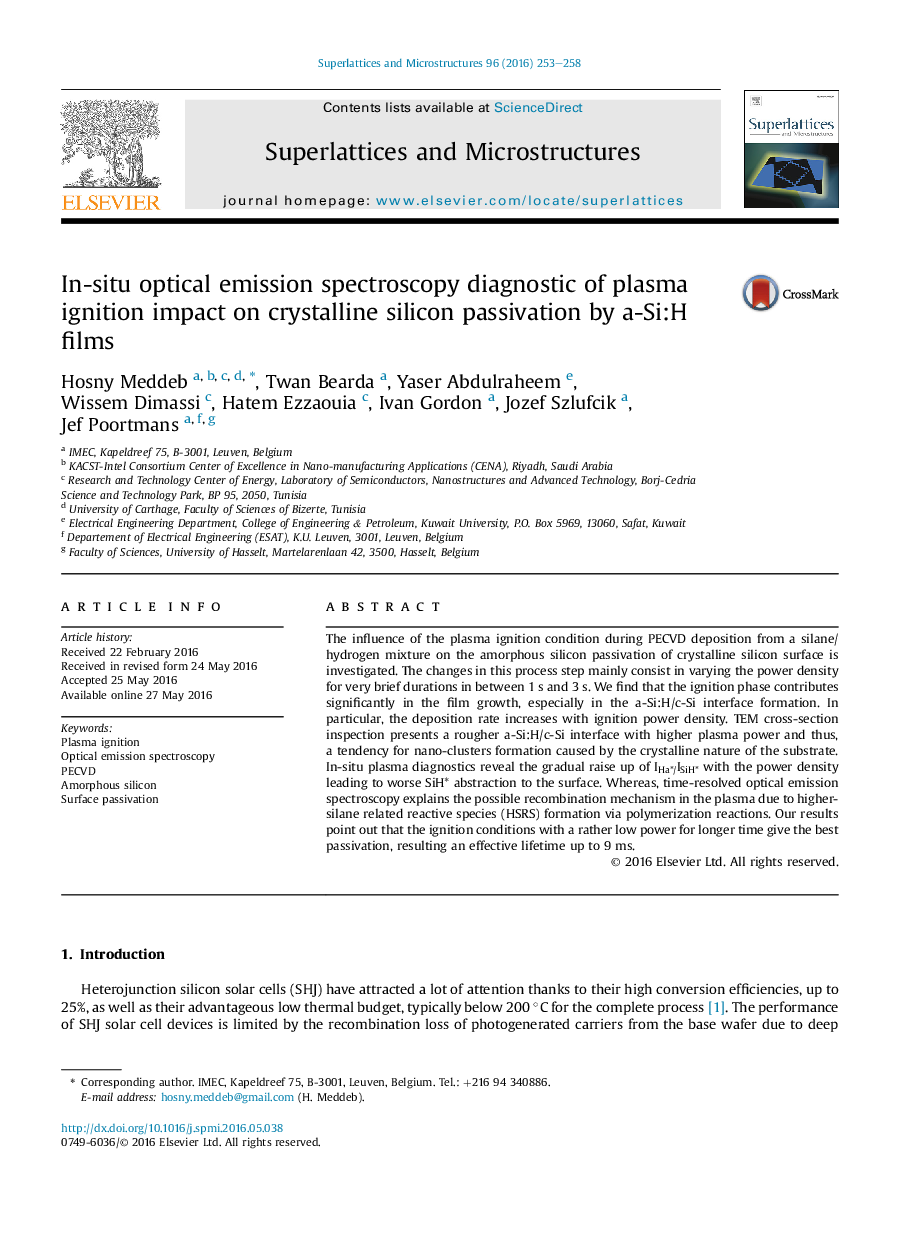| Article ID | Journal | Published Year | Pages | File Type |
|---|---|---|---|---|
| 1552642 | Superlattices and Microstructures | 2016 | 6 Pages |
•The influence of plasma ignition condition on a-Si:H films passivation of c-Si surface was analyzed.•The ignition phase contributes significantly to the film growth, especially in a-Si:H/c-Si interface formation.•Rougher a-Si:H/c-Si interface is produced with higher plasma power leading to a tendency for nano-clusters formation.•The contribution of higher silane related reactive species (HSRS) is a key event to create recombination defects.•Better passivation is obtained at lower ignition power for longer time, resulting in an effective lifetime up to 9 ms.
The influence of the plasma ignition condition during PECVD deposition from a silane/hydrogen mixture on the amorphous silicon passivation of crystalline silicon surface is investigated. The changes in this process step mainly consist in varying the power density for very brief durations in between 1 s and 3 s. We find that the ignition phase contributes significantly in the film growth, especially in the a-Si:H/c-Si interface formation. In particular, the deposition rate increases with ignition power density. TEM cross-section inspection presents a rougher a-Si:H/c-Si interface with higher plasma power and thus, a tendency for nano-clusters formation caused by the crystalline nature of the substrate. In-situ plasma diagnostics reveal the gradual raise up of IHa*/ISiH* with the power density leading to worse SiH* abstraction to the surface. Whereas, time-resolved optical emission spectroscopy explains the possible recombination mechanism in the plasma due to higher-silane related reactive species (HSRS) formation via polymerization reactions. Our results point out that the ignition conditions with a rather low power for longer time give the best passivation, resulting an effective lifetime up to 9 ms.
